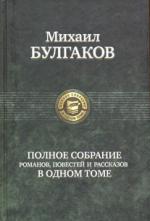|
This section contains 5,251 words (approx. 18 pages at 300 words per page) |

|
SOURCE: "The Social and Political Context of Bulgakov's 'The Fatal Eggs'," in Slavic Review, Vol. 51, No. 3, Fall, 1992, pp. 497-510.
In the essay below, Haber discusses the satirical parallels between the events following the Bolshevik Revolution and the characters and circumstances in the story "The Fatal Eggs. "
"The Fatal Eggs," written in 1924 and published in early 1925, was the first of Bulgakov's works to attract widespread attention—and a storm of controversy. Recipient of a few positive reviews as well as uniformly enthusiastic praise—privately expressed—from writers and editors, the novella was also the object of virulent attack from a number of (mostly proletarian) critics. Among the attackers were those who saw the work as a thinly veiled allegory and Professor Persikov's discovery of the "revolutionary" red ray as an allusion to the socialist experiments of the bolsheviks.
While a link between the scientific and socio-political levels of the...
|
This section contains 5,251 words (approx. 18 pages at 300 words per page) |

|


